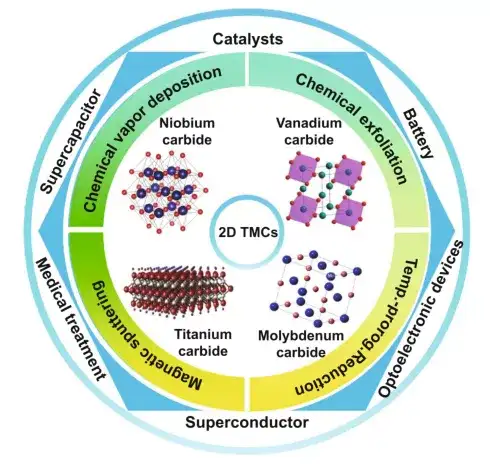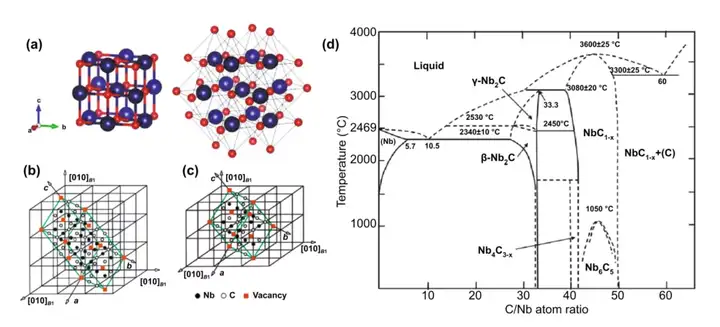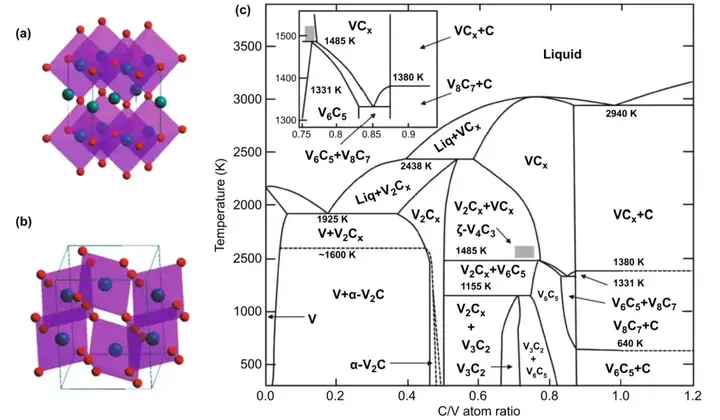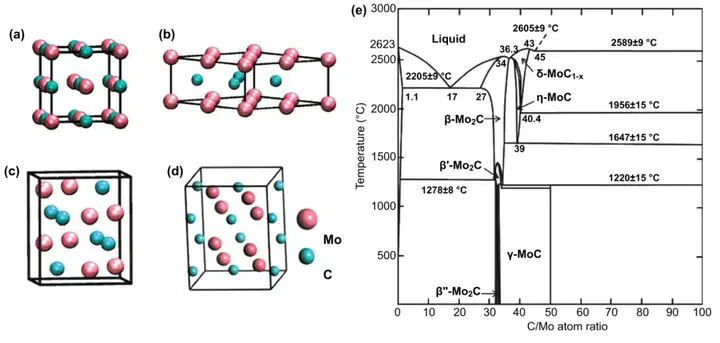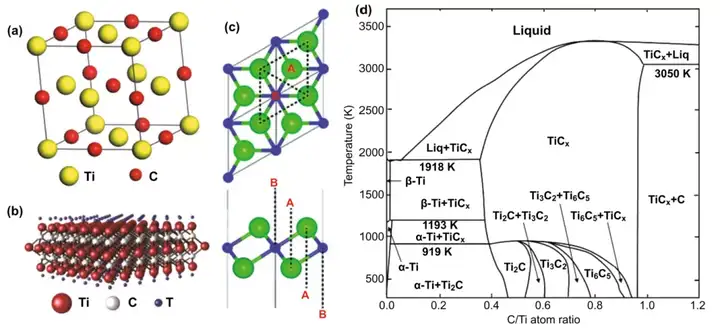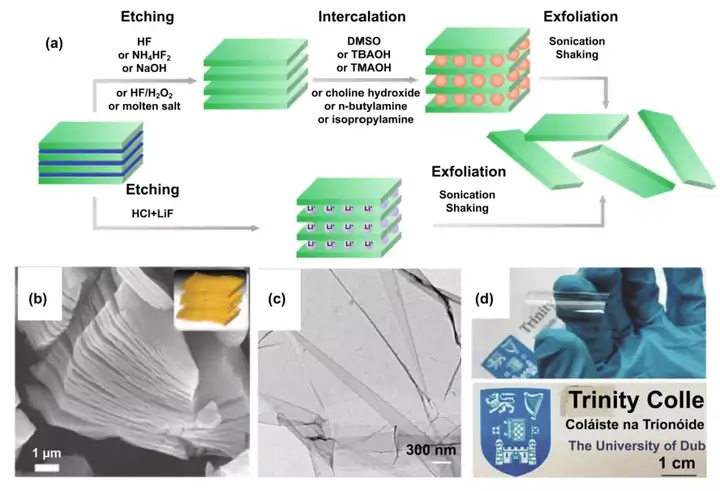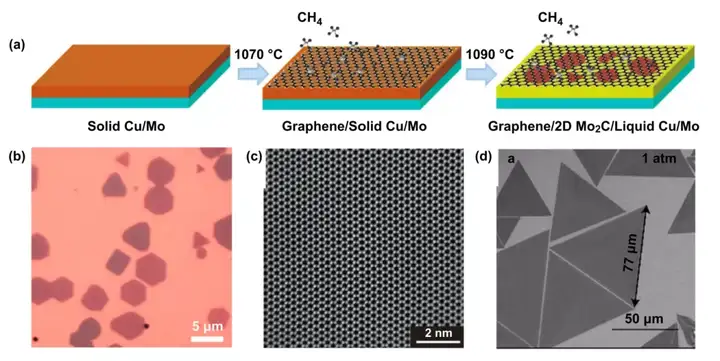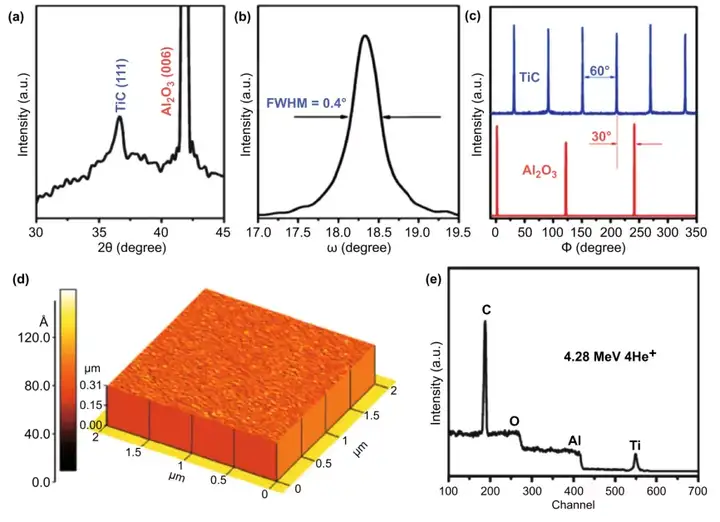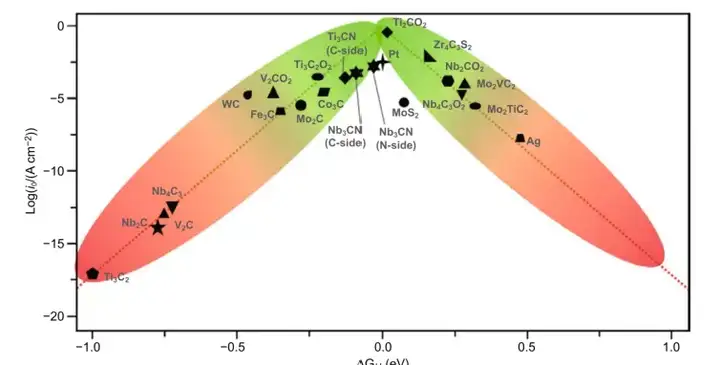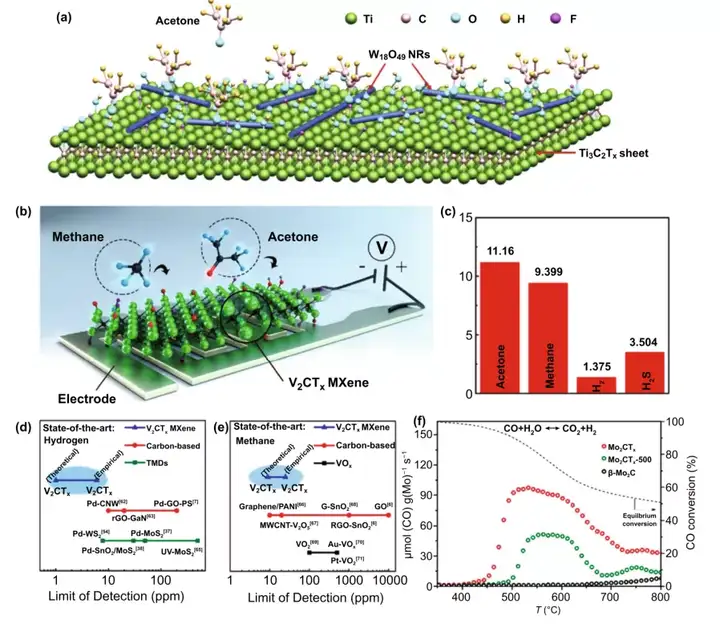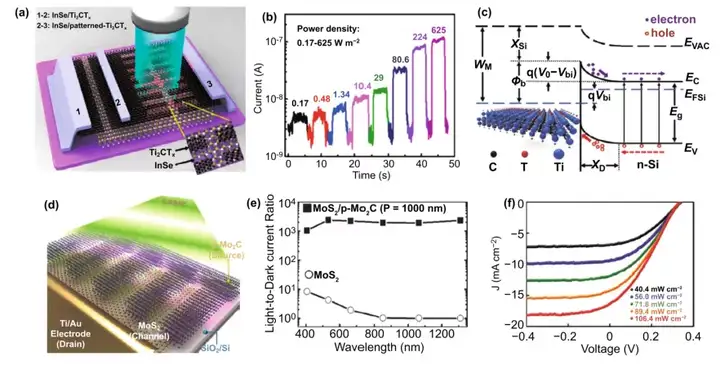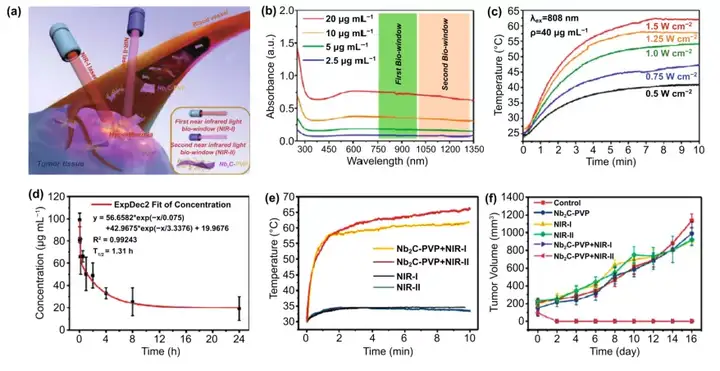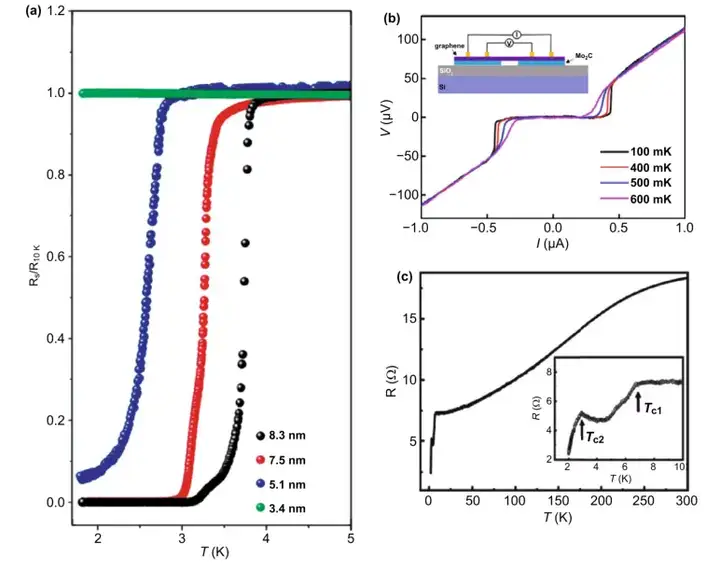已传文件:photo/1631586161.png
Two-dimensional transition metal carbides 2D TMCs have become energy storage, Research hotspots in the fields of catalysis, electromagnetic shielding, sensors, and superconductivity. Although some progress has been made in the preparation of quality TMCs powder materials, the preparation of TMCs films for electronic devices still faces important challenges. In this paper, taking niobium carbide, vanadium carbide, titanium carbide and molybdenum carbide as examples, TMCs, a two-dimensional material with great potential, is discussed in detail in terms of structure, physicochemical properties, synthesis methods and their wide application. Finally, the challenges and future prospects of 2D TMCs in energy storage, conversion, biomedicine, photoelectric detection, gas catalysis and other application fields are outlined.
Recent Progress in Emerging Two-Dimensional Transition Metal Carbides
Tianchen Qin, Zegao Wang*, Yuqing Wang, Flemming Besenbacher, Michal Otyepka, Mingdong Dong*
Nano-Micro Letters (2021)13: 183
https://doi.org/10.1007/s40820-021-00710-7
Highlights of this article
1. Discuss the phase diagram structure of transition metal carbides (TMCs). 2. The physical and chemical properties of TMCs are systematically summarized. 3. Discuss the potential applications and controllable synthesis strategies of TMCs.
brief introduction
The Wang Zegao team of Sichuan University and the Dong Mingdong team of Aarhus University in Denmark systematically summarized the latest developments of various TMCs. Taking niobium carbide, vanadium carbide, titanium carbide and molybdenum carbide as examples, this paper systematically summarizes several typical TMCs structures, phase diagram structures and physical and chemical properties. On this basis, the controllable synthesis strategy of TMCs was summarized and discussed, including chemical etching, chemical vapor deposition and programmed temperature rise method. It also summarized its potential applications in recent years, focusing on the application of TMCs in the fields of catalysis, energy storage, optoelectronic devices, superconducting effects and biomedicine. Finally, this article discusses the challenges and prospects in the research of TMCs, which provides a reference for further research.
Graphic guide
I Four typical carbides
1) Niobium carbide
Figure 1. Nb-based TMC structure. a) NbC B1 type crystal structure diagram; b) NbC₀.₃₈ unit cell structure, C2 space group; c) NbC₀.₃₈ unit cell structure, C2/m space group; d) C-Nb system phase diagram.
2) Vanadium carbide
Figure 2. The crystal structure of V-based TMC. a) VC; b) α-V₂C; c) C-V system phase diagram.
3) Molybdenum carbide
Figure 3. Bulk crystal structure of Mo-based TMC. a) fcc α-Mo1−x; b) Hexagonal γ-MoC and η-MoC; c) Orthogonal β-Mo₂C; d) Orthogonal α-Mo₂C; e) Phase diagram of the C-Mo system.
4) Titanium carbide
Figure 4. The structure of titanium carbide. a) Ordered structure of cubic TiC; b) Monolayer Ti₃C₂Tₓ molecular structure model; c) Monolayer Ti₂CTₓ molecular structure model; d) Phase diagram of the C-Ti system.
II Synthesis of transition metal carbide
1) Preparation of transition metal carbides by chemical stripping method
Figure 5. Preparation of MXene by chemical stripping. a) The mechanism of chemical exfoliation; b) SEM image of intercalation structure; c) TEM image of few layers of MXene; d) Digital image of transparent electrode based on MXene.
2) Preparation of transition metal carbides by chemical vapor deposition
Figure 6. Preparation of TMCs by chemical vapor deposition. a) Mo₂C growth mechanism, in which copper foil is located on the surface of molybdenum foil; b) Mo₂C flake formation at high temperature of graphene; c) Mo₂C atom image; d) SEM image of VC flake.
3) Temperature programmed reduction
Figure 7. Preparation of TiC by temperature-programmed reduction method. a-c) XRD analysis of TiC film; d) AFM morphology of TiC film; e) Elemental analysis of TiC film.
III Application of transition metal carbide
1) Electrocatalysis and photocatalysis
Figure 8. The function graph of exchange current and Gibbs free energy for hydrogen evolution reaction of TMCs.
2) Gas catalysis and sensor
Figure 9. Gas catalytic performance of TMCs. a) Schematic diagram of the reaction between acetone and W₁₈O₄₉/Ti₃C₂Tₓ composite material; b) Schematic diagram of the sensing mechanism of V₂CTₓ gas sensor; c) Theoretical LoD of V₂CTₓ film to acetone, methane, hydrogen and hydrogen sulfide at room temperature; de) Hydrogen and hydrogen sulfide for room temperature gas sensor LoD comparison of methane; f) WGS catalytic activity of Mo₂CTₓ, Mo₂CTₓ-500 and β-Mo₂C.
Figure 10. Optical and electrical properties of TMCs. a) Schematic diagrams of unpatterned and patterned InSe/Ti₃CTₓ photodetectors; b) Light response curves of patterned InSe/Ti₂CTₓ avalanche photodetectors under different illumination densities; c) Ti₃C₂Tₓ/n-Si Schottky junction Band diagram under illumination; d) Schematic diagram of MoS₂/p-Mo₂C hybrid photodetector device under illumination; e) ID-VG curve of MoS₂/p-Mo₂C hybrid photodetector device under different wavelength illumination; f ) JV curves of Ti₃C₂Tₓ/n-Si heterostructure devices under different energy density illumination.
4) Medical
Figure 11. Medical applications based on Nb₂C. a) Schematic diagram of the application of two-dimensional Nb₂C in photothermal treatment of tumors; b) s-near-infrared absorption spectra of Nb₂C NSs aqueous suspensions at different concentrations; c) Nb₂C NSs aqueous suspensions irradiated with 808 nm near-infrared light at different power densities Light-heat curve; d) The blood circulation life of mice after intravenous injection of Nb₂C-PVP; e) NIR-I, NIR-II, Nb₂C- PVP+NIR-I and Nb₂C-PVP+NIR-II group 4t1 tumor-bearing mice The temperature of the tumor site increased under laser irradiation; f) Time dependence after different treatments (control group, only Nb₂C-PVP, NIRI, NIR-II, Nb₂C-PVP+NIR-I and Nb₂C-PVP+NIR-II) Tumor growth curve.
5) Superconductivity
Figure 12. Superconducting properties of metal carbides. a) Superconducting characteristics of Mo₂C flakes with different thicknesses; b) Typical DC Josephson response of Mo₂C/graphene/Mo₂C junctions at different temperatures; c) Superconducting characteristics of NbC flakes.
IV Summary and Outlook
This article reviews the research progress of transition metal carbides represented by niobium carbide, vanadium carbide, molybdenum carbide and titanium carbide on the structure, properties, applications and synthesis methods. At present, the main methods for preparing TMC films are chemical stripping, chemical vapor deposition, temperature programmed reduction, and magnetron sputtering. Although TMC films have shown great potential in various fields, there are still some challenges in future applications. First of all, the current synthesis methods of TMC membranes still have certain limitations. For example, the master phase MAX of MXene is difficult to synthesize, and many MXenes cannot be successfully prepared by chemical stripping method due to the inability to synthesize stable MAX phase. The chemical vapor deposition method has limitations in the preparation of large-size carbide films. Therefore, new methods for synthesizing TMCs have yet to be explored. Secondly, the theoretical mechanism of some characteristics of TMCs film in the application field is still unclear. For example, in the field of energy storage, the ion dynamics and charge storage mechanisms between carbide films are still unclear. Third, improving the electrochemical, mechanical and thermal stability of TMCs is still a future research topic. It is worth mentioning that the research field of TMCs films is full of opportunities and challenges, and there are still great application potentials to be tapped in different fields. In the foreseeable future, transition metal carbide materials will play an increasingly important role in solving various global challenges.
Written by: original author
Editor: Nawei Express English Editorial Department
This information is sourced from the Internet for academic exchanges. If there is any infringement, please contact us to delete it immediately


